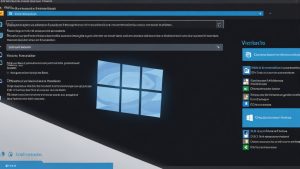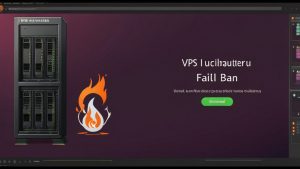How to Install FreeBSD on a VPS: A Step-by-Step Guide
Installing FreeBSD on a VPS (Virtual Private Server) is a great way to get a reliable and flexible operating system for various tasks, such as web hosting, development, testing, and more. In this article, we will thoroughly examine the process of installing FreeBSD on your VPS, from choosing a suitable provider to the initial system configuration. We will provide step-by-step instructions and command examples so you can easily and successfully install FreeBSD on your VPS.
Contents
- Choosing a VPS Provider
- Preparing for Installation
- Installing FreeBSD from an ISO Image
- Initial FreeBSD Configuration
- System Updates and Security
Choosing a VPS Provider
The first step to installing FreeBSD on a VPS is choosing a suitable provider. There are many companies offering VPS services, and it’s important to choose one that meets your requirements and budget. When choosing, consider several key factors:- Price: Compare prices from different providers, considering the amount of RAM, disk space, and traffic.
- Performance: Pay attention to the type of processors and storage devices used (SSD or HDD). SSDs provide significantly higher performance.
- Operating System Support: Make sure the provider offers the ability to install FreeBSD. Some providers offer ready-made images, while others require manual installation.
- Server Location: Choose a server located closer to your target audience to reduce latency.
- Technical Support: Check the availability and quality of technical support. In case of problems, you will need qualified assistance.
- DigitalOcean
- Vultr
- Linode
- Hetzner
Example 4: Testing disk write speed using the `dd` command.Expert Tip: Before finally choosing a VPS provider, test its performance using free tools such as `iperf3` to measure network bandwidth and `dd` to measure disk write speed.
dd if=/dev/zero of=testfile bs=1M count=1024 conv=fdatasyncPreparing for Installation
After choosing a VPS provider and plan, you need to prepare for the installation of FreeBSD. The preparation process depends on whether the provider provides a ready-made FreeBSD image or requires manual installation. In most cases, if there is no ready-made image, you will need a FreeBSD ISO image and the ability to upload it to the VPS.- Obtaining access to the VPS: After ordering the VPS, the provider will provide you with an IP address, login, and password (or SSH key) to access the server. Access is usually via the SSH protocol.
- Downloading the FreeBSD ISO image: Download the FreeBSD ISO image from the official website (https://www.freebsd.org/where/). Choose the appropriate version and architecture (usually amd64 for 64-bit systems).
- Creating a bootable medium (if necessary): If your VPS does not support booting from an ISO image, you may need to create a bootable medium (for example, a USB drive) and boot from it. This process depends on the capabilities provided by your VPS provider.
ssh root@your_vps_ip_addresswget https://download.freebsd.org/ftp/releases/amd64/FreeBSD-13.2-RELEASE-amd64-disc1.isosha256 FreeBSD-13.2-RELEASE-amd64-disc1.isoInstalling FreeBSD from an ISO Image
The process of installing FreeBSD from an ISO image may vary slightly depending on your VPS provider and the tools they provide. In most cases, you will need to access the VNC console or serial console of your VPS to interact with the FreeBSD installer. Some providers provide tools for loading the ISO image and rebooting the VPS into installation mode.- Booting from an ISO image: Reboot your VPS and select boot from the ISO image. This is usually done through the VPS provider’s control panel.
- Running the FreeBSD installer: After booting from the ISO image, the FreeBSD installer will start. Follow the instructions on the screen to configure the installation parameters.
- Disk configuration: Specify which disks FreeBSD will be installed on. You can use the entire disk or create partitions. It is recommended to use ZFS for reliability and flexibility.
- Network configuration: Specify the IP address, network mask, gateway, and DNS servers. These parameters are usually provided by your VPS provider.
- Root user configuration: Set a password for the root user. This is necessary for system administration.
- Selection of system components: Choose which system components will be installed. You can install the base system, ports, and other tools.
hostname="your_hostname"
ifconfig_vtnet0="inet your_vps_ip_address netmask 255.255.255.0"
defaultrouter="your_gateway_ip_address"
#PermitRootLogin yes
PermitRootLogin no
Initial FreeBSD Configuration
After completing the installation of FreeBSD, you need to perform the initial system configuration. This includes setting the time zone, locale, hostname, users, and other parameters.- Time zone configuration: Set the correct time zone for your server.
- Locale configuration: Set the locale corresponding to your language and region.
- Hostname configuration: Set the hostname for your server.
- Creating a user: Create a regular user to administer the system. It is not recommended to use the root user for everyday work.
- Sudo configuration: Configure sudo for a regular user so that they can execute commands with root privileges.
- Firewall installation and configuration: Install and configure a firewall to protect your server.
tzsetupadduserpw groupmod wheel -m your_usernamevisudo%wheel ALL=(ALL) ALLSystem Updates and Security
After the initial configuration, it is important to regularly update the system and ensure its security. This includes installing the latest security updates, configuring a firewall, and other security measures.- System update: Regularly update the system using the `freebsd-update` command.
- Installing port updates: Update ports (if you use them) using the `portmaster` command.
- Firewall configuration: Configure a firewall to protect your server. It is recommended to use `pf` (Packet Filter), the built-in FreeBSD firewall.
- Security monitoring: Monitor the system for suspicious activity. Use tools such as `fail2ban` to protect against brute-force attacks.
- Regular backups: Regularly back up your data so that you can quickly restore the system in the event of a failure.
freebsd-update fetch
freebsd-update installshutdown -r nowext_if = "vtnet0"
tcp_services = "{ 22, 80, 443 }"
set skip on lo0
block all
pass in on $ext_if proto tcp to any port $tcp_services flags S/SA keep state
pass out on $ext_if proto tcp from any port $tcp_services flags S/SA keep state
pass out quick inet from any to any keep state
pass in quick inet from any to any keep state
pfctl -f /etc/pf.conf
pfctl -epkg install fail2bancp /usr/local/etc/fail2ban/jail.conf /usr/local/etc/fail2ban/jail.local
vi /usr/local/etc/fail2ban/jail.local
service fail2ban start




